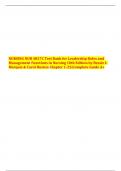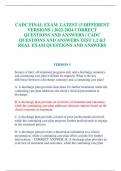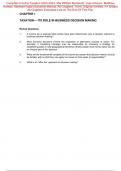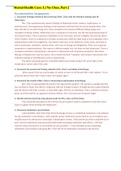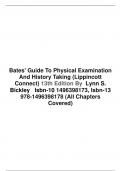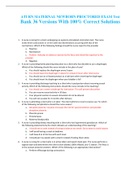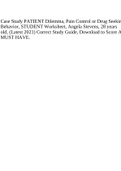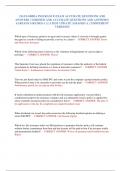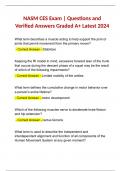Exam (elaborations)
NURSING NUR 4827C Test Bank for Leadership Roles and Management Functions in Nursing 10th Edition by Bessie L Marquis & Carol Huston Chapter 1-25|Complete Guide A+
NURSING NUR 4827C Test Bank for Leadership Roles and Management Functions in Nursing 10th Edition by Bessie L Marquis & Carol Huston Chapter 1-25|Complete Guide A+
[Show more]
